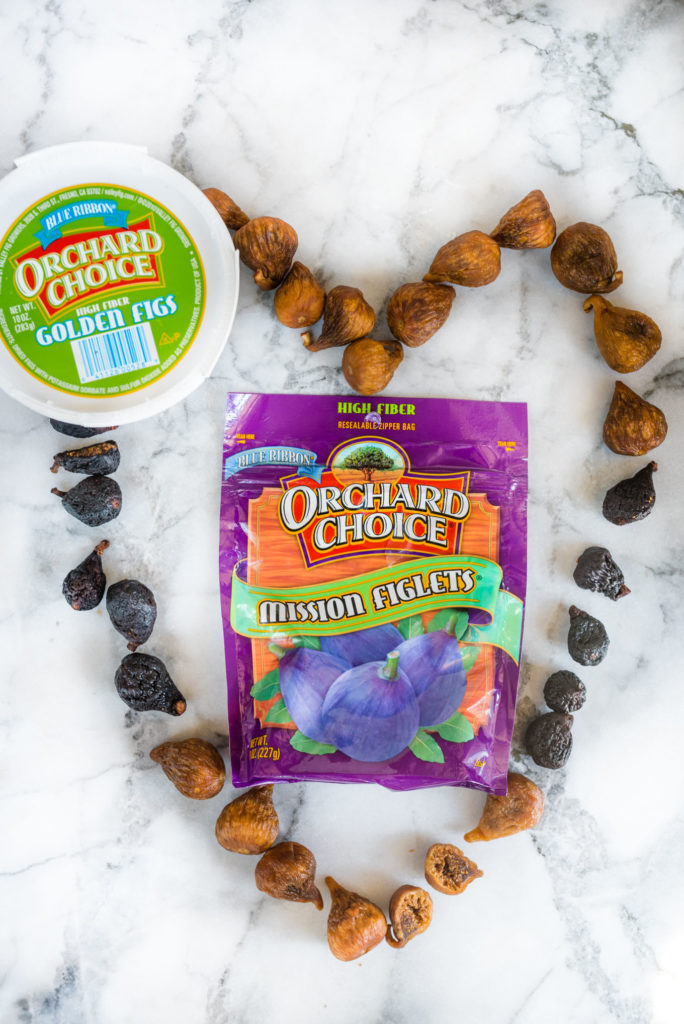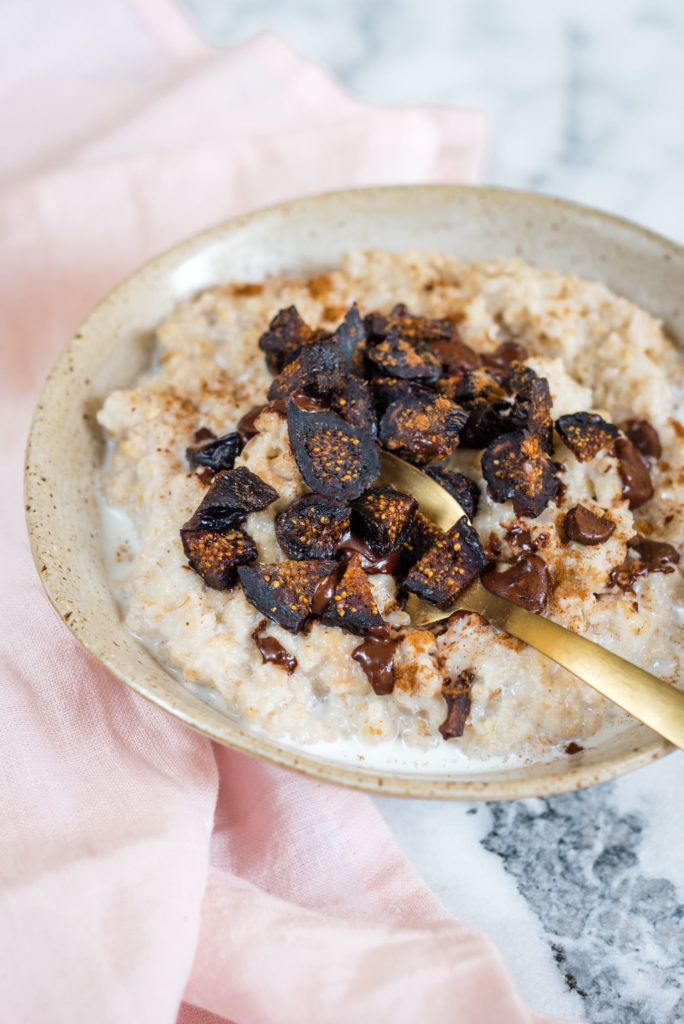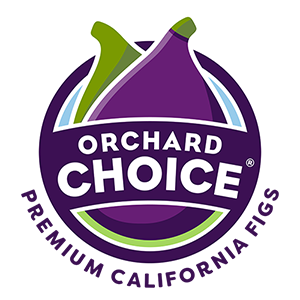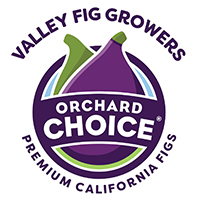Carbohydrates have a bad reputation and many people are confused on how much to consume, but it is more important to focus on the type of carbohydrates rather than the exact amount. The carbs in dried figs are a great choice—let’s find out why and how many carbs in figs are present.

What are Carbohydrates?
Carbohydrates come in many different forms, the most common being starches, sugars and fiber. They are found in an array of both healthy and unhealthy foods and consist of carbon, hydrogen, and oxygen atoms.
Simple carbohydrates are sugars. While some occur naturally in milk, most are added to foods. They provide a quick source of energy but leave us feeling hungry soon after eating. Examples are white bread, sugar and candies.
Complex carbohydrates are comprised of three or more sugar molecules bonded together and take longer for our bodies to break down. Examples are fruit, vegetables, legumes and whole grains.
Plants, such as figs, are rich sources of complex carbohydrates and fiber. Complex carbs provide a major source of vitamins, minerals and energy for your body and play other important roles.
The US Dietary guidelines recommend that 45-65% of energy in our diet come from carbohydrates. Carbs metabolize into glucose, which your body’s cells require for fuel. If you consume a 2,000 calorie diet for example, you need somewhere between 225 and 325 grams of carbohydrates a day.

Like with any food group, some choices are better than others. Instead of getting your carbohydrates from highly processed sugary sodas and other sweets (aka refined or simple carbs), try to consume whole foods like whole grains, legumes, fruits and veggies. Refined carbs are often called “empty calories” because they provide little nutritional value.
The type of carbohydrates in dried figs comes from the natural sugars found in fruit as opposed to added sugar. Plus, the fiber from the figs slows digestion, which promotes a feeling of fullness.

How Many Carbs in Figs are Present?
One-quarter cup of dried figs has 26 grams of carbohydrates and 5 grams of fiber, not to mention a plethora of other nutrients. Orchard Choice and Sun-Maid California Dried Figs are equally delicious and are convenient to stock in your pantry.
Easy Ways to Get Carbs in Dried Figs
A breakfast of a piece of whole grain toast topped with dried figs and berries (choose avocado or whipped cream cheese as your base) is a great choice that will check off the box of “good carbs”.
If you still prefer to limit your carbohydrate intake, try a salad topped with dried figs as a way to incorporate some healthy carbs while still keeping your overall intake at a reasonable level.

Dinner could be this delicious Goat Cheese Pizza with Figs & Chicken.
Eating carbohydrates that are rich in fiber may reduce the risk of obesity, type 2 diabetes, cardiovascular disease and certain intestinal tract disorders. Learn more about how to increase fiber with figs.
Worried about gaining weight if you eat carbohydrates? Regardless of whether people consume a high-carb, high-protein or high-fat diet, they can maintain their weight as long as energy intake matches energy output.
Even though complex carbohydrates have many benefits, there is no need to overdo it unless you are planning to run a marathon. In addition to portion control, limit foods that are mostly refined carbohydrates (such as desserts or packaged snacks) for special occasions or when strong cravings strike, as they do not satisfy hunger as well.
In summary, complex carbohydrates in dried figs:
- Fuel your body with preferred energy
- Boost fiber to promote fullness
- Add nutrient-dense vitamins and minerals to any meal or snack
- Provide a convenient source of complex carbohydrates to your diet







7 Comments on “Carbs in Figs: Reasons Why You Should Be Eating Them”
You have a typo in your article…you use the word “compromised” when you should have used “comprised”. You should correct it since compromised lends a negative slant to what you’re trying to say.
I enjoyed reading your article and appreciate your clarification of the different types of carbs.
do you grow Violette de Bordeaux Figs or Olympian figs?
Valley Fig Growers grows Mission Figs and Golden Figs (a mix of Tenas and Sierras), so no Violette de Bordeaux Figs or Olympians. Thanks for the question!
Are these figs free of sulphites and or nitrates
The only preservative we use in the figs and is listed in the ingredients is potassium sorbate for freshness.
What is a quarter cup?
Thanks for the question, Ann. One quarter cup of dried figs cited in this article has 26 grams of carbohydrates and 5 grams of fiber. Because dried figs vary by size, there isn’t an easy equivalent in ounces if looking for what the weight would be.